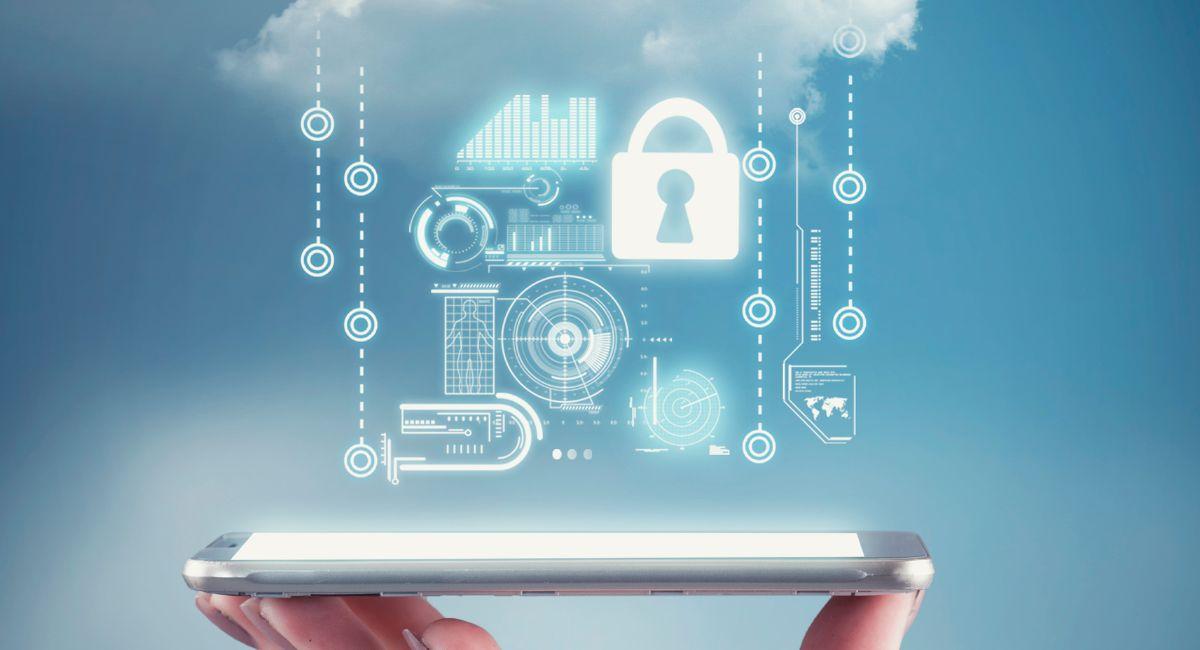Top 10 Intriguing Ways To Further The Security Of The Global Blockchain Ecosystem

The global blockchain ecosystem is a dynamic and interconnected network of diverse participants, technologies, and applications centered around the use of blockchain technology. Originally conceived as the underlying technology for cryptocurrencies, blockchain has evolved to encompass a wide range of industries and use cases, reshaping the way information is stored, transactions are conducted, and trust is established.
At its core, the blockchain ecosystem revolves around decentralized and distributed ledger technology. This technology enables secure, transparent, and immutable record-keeping, with information stored across a network of computers (nodes) rather than a central authority. Key components of the global blockchain ecosystem include:
- Cryptocurrencies and Tokens: Cryptocurrencies like Bitcoin and Ethereum serve as the foundation of the blockchain ecosystem, facilitating peer-to-peer transactions. Tokens, representing digital or physical assets, utilities, or rights, have become integral to decentralized applications (dApps) and fundraising mechanisms through initial coin offerings (ICOs) and security token offerings (STOs).
- Blockchain Platforms and Protocols: Various blockchain platforms and protocols provide the infrastructure for developing decentralized applications. Ethereum, Binance Smart Chain, and others support the creation of smart contracts, enabling programmable and self-executing agreements.
- Decentralized Finance (DeFi): DeFi has emerged as a prominent sector within the blockchain ecosystem, offering financial services without traditional intermediaries. Decentralized exchanges (DEXs), lending protocols, and yield farming platforms are part of the DeFi landscape.
- Non-Fungible Tokens (NFTs): NFTs represent unique digital or physical assets on the blockchain, transforming industries like art, gaming, and entertainment. NFT marketplaces on platforms such as Ethereum have gained widespread attention.
- Enterprise Blockchain Solutions: Blockchain is increasingly adopted by businesses for supply chain management, identity verification, and transparent record-keeping. Enterprise-focused blockchain frameworks like Hyperledger and R3 Corda cater to specific industry needs.
- Regulatory Landscape: Governments and regulatory bodies worldwide are actively shaping the legal framework for blockchain and cryptocurrencies. Regulatory clarity is essential for fostering innovation while addressing concerns related to fraud, money laundering, and consumer protection.
- Investors and Funding: The blockchain ecosystem receives support from venture capital, angel investors, and crowdfunding. Initial coin offerings and security token offerings provide alternative fundraising avenues for blockchain startups.
- Blockchain Development and Communities: Active developer communities contribute to the ongoing improvement and innovation of blockchain protocols. Open-source development fosters collaboration, knowledge sharing, and the evolution of the technology.
- Global Collaboration and Interoperability: Collaboration between different blockchain networks is crucial for achieving interoperability. International partnerships and initiatives aim to create common standards and protocols, ensuring seamless communication between diverse blockchain platforms.
- Social Impact and Sustainability: Blockchain is explored for social impact, with applications in areas such as healthcare, education, and philanthropy. Efforts are underway to address sustainability concerns, such as energy consumption, through the exploration of energy-efficient consensus mechanisms like proof-of-stake (PoS).
Also, read- Unveiling The Significance Of Web3 Technology In Blockchain Development
Importance of the global blockchain ecosystem

The global blockchain ecosystem holds significant importance across various sectors, and its impact extends to technology, finance, governance, and beyond. Here are key reasons highlighting the importance of the global blockchain ecosystem:
- Decentralization and Trust: Blockchain’s decentralized nature eliminates the need for a central authority in transactions, fostering trust among participants. This is particularly crucial in financial transactions, where traditional systems often involve intermediaries.
- Security and Immutability: Blockchain’s use of cryptographic techniques ensures the security and immutability of data. Once information is recorded on the blockchain, it is nearly impossible to alter, providing a tamper-resistant and secure record-keeping system.
- Transparency and Accountability: The transparent and public nature of blockchain ledgers enhances accountability. All participants in a blockchain network can access and verify the information, reducing the risk of fraud or corruption.
- Efficiency and Cost Savings: Blockchain streamlines processes by removing intermediaries, reducing the time and cost associated with transactions. This efficiency is particularly valuable in financial services, supply chain management, and other industries.
- Financial Inclusion: Blockchain has the potential to bring financial services to unbanked or underbanked populations, promoting financial inclusion. Cryptocurrencies and decentralized finance (DeFi) platforms offer alternatives to traditional banking systems.
- Smart Contracts and Automation: Smart contracts, self-executing contracts with the terms directly written into code, automate and streamline various processes, reducing the need for manual intervention. This has applications in legal agreements, supply chain management, and more.
- Tokenization and Asset Management: Blockchain facilitates the tokenization of assets, allowing for the representation of physical or digital assets as tokens on the blockchain. This opens up new possibilities for efficient asset management and trading.
- Global Trade and Supply Chain: Blockchain improves transparency and traceability in supply chains, reducing fraud and ensuring the authenticity of products. This is especially beneficial in global trade, where multiple parties are involved in complex supply chain networks.
- Innovation in Industries: The global blockchain ecosystem fosters innovation across industries. From healthcare to education, blockchain applications are being explored to improve processes, enhance security, and provide new solutions to longstanding challenges.
- Data Privacy and Ownership: Blockchain allows individuals to have more control over their data. Users can grant permission for specific entities to access their information, ensuring greater data privacy and ownership.
- Cross-Border Transactions: Blockchain facilitates faster and more cost-effective cross-border transactions. Cryptocurrencies can be transferred seamlessly across borders without the need for traditional banking intermediaries.
- Emerging Technologies Integration: Blockchain is often integrated with other emerging technologies such as artificial intelligence, the Internet of Things (IoT), and 5G, creating synergies that enhance the capabilities of these technologies.
- Resilience and Redundancy: The decentralized nature of blockchain networks provides resilience against single points of failure. Even if one node or part of the network fails, the system continues to operate, ensuring high availability and reliability.
Security of the global blockchain ecosystem

The security of the global blockchain ecosystem is a critical aspect that encompasses various measures, technologies, and practices to ensure the integrity, confidentiality, and availability of blockchain networks and applications. Several key elements contribute to the security of the global blockchain ecosystem:
- Cryptography:
- Blockchain relies heavily on cryptographic techniques to secure transactions and control access. Public and private key pairs are used for authentication, and hashing algorithms ensure the integrity of data stored in blocks.
- Consensus Mechanisms:
- Consensus mechanisms, such as Proof of Work (PoW) and Proof of Stake (PoS), ensure agreement among network participants on the validity of transactions. These mechanisms make it difficult for malicious actors to manipulate the blockchain.
- Decentralization:
- The decentralized nature of blockchain networks adds a layer of security. A distributed ledger ensures that no single point of failure exists, reducing the risk of a coordinated attack crippling the entire system.
- Immutability:
- Once data is recorded on the blockchain, it is extremely difficult to alter. The consensus mechanism and cryptographic techniques contribute to the immutability of transactions, making the blockchain a secure and tamper-resistant ledger.
- Smart Contracts Auditing:
- Smart contracts, self-executing code on the blockchain, should be audited thoroughly to identify vulnerabilities or potential exploits. Security audits help ensure the reliability of smart contracts and prevent potential threats.
- Permissioned Blockchains:
- In certain use cases, such as enterprise solutions, permissioned blockchains are employed. These blockchains restrict access to a predefined set of participants, enhancing control and security.
- Network Security:
- Network security measures, such as firewalls, encryption, and secure communication protocols, protect blockchain nodes from external attacks. Robust network security is crucial to prevent unauthorized access to the blockchain.
- Wallet Security:
- Users store their cryptocurrency in digital wallets, and securing these wallets is essential. Hardware wallets, multi-signature wallets, and secure key management practices help protect digital assets from theft.
- Regular Updates and Patches:
- Blockchain protocols and software require regular updates to address security vulnerabilities. Developers and network participants should stay vigilant and apply patches promptly to maintain a secure ecosystem.
- Privacy Solutions:
- Privacy-focused technologies, such as zero-knowledge proofs and ring signatures, are integrated into certain blockchain platforms to enhance the confidentiality of transactions and user data.
- Governance and Compliance:
- Adherence to regulatory compliance and effective governance mechanisms contribute to the overall security of the blockchain ecosystem. Compliance with legal standards helps prevent regulatory challenges and legal risks.
- Threat Intelligence and Monitoring:
- Continuous monitoring of the blockchain network for suspicious activities and the use of threat intelligence tools are crucial for identifying and mitigating potential security threats.
- User Education:
- Educating users about best security practices, such as securing private keys, using secure wallets, and recognizing phishing attempts, helps reduce the risk of user-related security incidents.
- Disaster Recovery and Redundancy:
- Implementing disaster recovery plans and ensuring redundancy in nodes and infrastructure contribute to the resilience of the blockchain ecosystem, enabling it to withstand and recover from unexpected events.
So, I took it upon myself to get acquainted with blockchain technology and how it works at the core.
— MIDE of Fixa🧑💻 (@dickson_build) January 29, 2024
I didn’t just stop there;
I also built my implementation of a blockchain to demonstrate how creating and validating a block works on a blockchain.
Link below 👇 https://t.co/Iyu5Vm4KhV pic.twitter.com/yRU74he8cZ
Top 10 ways to further the security of the global blockchain ecosystem

Enhancing the security of the global blockchain ecosystem is crucial to maintaining trust, protecting user assets, and ensuring the continued growth of blockchain technologies. Here are ten ways to further the security of the global blockchain ecosystem:
- Adopt Robust Cryptographic Standards:
- Implement and adhere to strong cryptographic standards to secure transactions, authentication, and data integrity. Regularly update cryptographic algorithms and practices to stay ahead of emerging threats.
- Consensus Mechanism Diversity:
- Promote the diversity of consensus mechanisms within blockchain networks. Different mechanisms, such as Proof of Work (PoW), Proof of Stake (PoS), and Delegated Proof of Stake (DPoS), offer varying security models, reducing vulnerabilities associated with a single consensus approach.
- Encourage Regular Security Audits:
- Conduct regular security audits of blockchain protocols, smart contracts, and applications. Independent third-party audits help identify vulnerabilities, weaknesses, or potential exploits, ensuring the reliability of the blockchain ecosystem.
- Implement Privacy Solutions:
- Integrate privacy-focused technologies, such as zero-knowledge proofs and ring signatures, to enhance confidentiality and protect sensitive information. Privacy solutions contribute to a more secure and user-friendly blockchain experience.
- Network Security Measures:
- Strengthen network security by employing measures such as firewalls, intrusion detection systems, and encrypted communication protocols. Secure network infrastructure is essential to protect nodes from external attacks.
- Foster Regulatory Compliance:
- Advocate for and adhere to regulatory compliance standards. Collaboration with regulatory bodies helps create a legal framework that supports innovation while addressing concerns related to fraud, money laundering, and consumer protection.
- Promote Decentralization:
- Encourage and prioritize decentralization within blockchain networks. A distributed and decentralized architecture minimizes the impact of potential attacks, making it more difficult for malicious actors to compromise the entire system.
- Educate Users on Security Best Practices:
- Develop educational initiatives to inform users about security best practices. Promote secure wallet usage, emphasize the importance of keeping private keys confidential, and educate users on recognizing and avoiding phishing attempts.
- Establish Governance Mechanisms:
- Implement effective governance structures within blockchain networks. Clear governance models enable prompt decision-making, response to security incidents, and the ability to adapt to emerging threats.
- Invest in Research and Development:
- Allocate resources for continuous research and development to stay ahead of evolving security threats. Invest in the development of new security technologies, threat intelligence, and collaborative efforts to address emerging challenges.
Conclusion
In conclusion, securing the global blockchain ecosystem is imperative for ensuring trust, fostering innovation, and realizing the full potential of blockchain technologies across various industries. The ten outlined strategies, ranging from cryptographic standards and consensus mechanism diversity to user education and disaster recovery planning, collectively contribute to a more robust and resilient blockchain environment.
As the blockchain ecosystem continues to evolve, the importance of security cannot be overstated. The adoption of these security measures not only safeguards digital assets and sensitive information but also addresses concerns related to regulatory compliance and user confidence. Moreover, the proactive implementation of security best practices demonstrates a commitment to creating a trustworthy and resilient foundation for the decentralized future.
Community collaboration, responsible disclosure, and continuous research and development are vital components of a comprehensive security strategy. The global blockchain community must work together to share insights, address emerging threats, and collectively enhance the security posture of blockchain networks.
As blockchain technology integrates further into mainstream applications, adherence to these security principles will be essential for gaining widespread acceptance and fostering a secure, transparent, and efficient global blockchain ecosystem. The journey towards a more secure blockchain future requires ongoing commitment, adaptability, and a collaborative spirit among all stakeholders in the rapidly evolving landscape of distributed ledger technologies.




























































